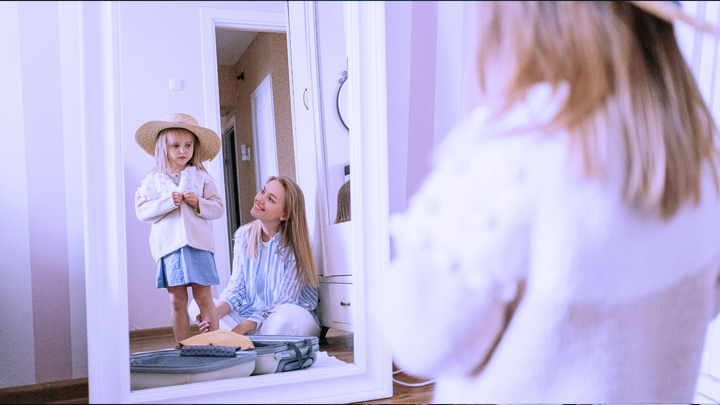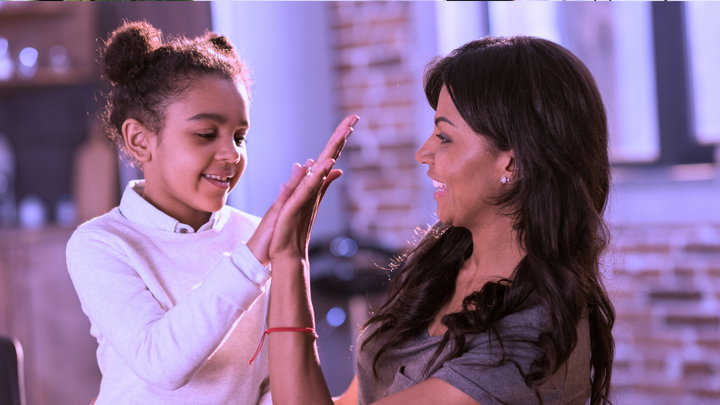Parent-Child Goal Collaboration: Building Stronger Bonds and Bright Futures

Imagine a family where dreams are shared, milestones are celebrated, and challenges become stepping stones. Sounds idyllic, right? Welcome to the world of parent-child goal collaboration, a transformative approach that's not just about teaching kids to reach for the stars but also about strengthening the family bond along the way. Rooted in psychological principles and peppered with practical strategies, this method equips children with life skills while creating a partnership between parents and their young dreamers.
What Is Parent-Child Goal Collaboration?
At its heart, parent-child goal collaboration is all about teamwork. It's a parenting approach where parents and kids work together to set, pursue, and achieve meaningful goals. By encouraging open communication, shared decision-making, and mutual support, families can create an environment where children learn resilience, independence, and adaptability. From tackling homework challenges to mastering a new skill, this strategy ensures that kids aren't just growing—they're thriving.
Why It Works: The Psychology Behind Collaboration
The magic of parent-child goal collaboration isn't a happy accident. It's grounded in powerful psychological theories that explain how kids grow and learn.
Piaget's Cognitive Development
Jean Piaget's stages of cognitive development remind us that kids think and learn differently at different ages. For example, a toddler learns best through hands-on activities like stacking blocks, while a teenager might thrive on abstract problem-solving tasks. Recognizing these stages helps parents tailor their goal-setting strategies to match their child's current abilities.
Vygotsky's Zone of Proximal Development
Lev Vygotsky introduced the idea of the Zone of Proximal Development (ZPD), which is just a fancy way of saying kids learn best when they're challenged—but not too much. Collaborative parenting leverages this sweet spot by offering just the right amount of guidance, helping kids stretch their abilities without feeling overwhelmed.
Erikson's Emotional Growth
Erik Erikson's psychosocial development theory highlights the importance of fostering trust, autonomy, and a sense of initiative in kids. By involving children in goal-setting and decision-making, parents can help them build confidence and a sense of responsibility.
How to Foster Parent-Child Goal Collaboration
Ready to dive in? Here are some tried-and-true strategies to kickstart your goal-setting journey with your child.
1. Discover Their Passions
Start by identifying your child's natural talents and interests. Whether they're a budding artist or a curious scientist, knowing what excites them can make goal-setting more meaningful. Engage in exploratory activities like drawing, building, or experimenting to uncover their strengths.
2. Set SMART Goals
Guide your child in setting SMART goals—specific, measurable, achievable, relevant, and time-bound. Instead of vague aims like “get better at math,” help them create concrete objectives like “solve five practice problems daily.” This clarity keeps them focused and motivated.
3. Break It Down
Big goals can feel overwhelming, especially for kids. Break them into smaller, bite-sized steps. For instance, if your child dreams of learning to play the piano, start with mastering one simple melody before tackling full songs.
4. Celebrate Milestones
Every step forward is a win. Whether it's a high-five, a family movie night, or a heartfelt “I'm proud of you,” celebrating progress keeps the momentum alive and reinforces positive behaviors.
5. Embrace Setbacks
Life's not all smooth sailing, and that's okay. Teach your child that setbacks are opportunities to learn and grow. Share your own stories of overcoming challenges to help them build resilience and a growth mindset.
Tools to Make Collaboration Fun
The right tools can make all the difference. Here are some resources to spice up the goal-setting process:
Vision Boards
Get crafty with a vision board! Let your child cut out pictures, quotes, or drawings that represent their goals. Display it in their room as a daily reminder of what they're working toward.
WOOP Framework
Introduce the WOOP method: Wish, Outcome, Obstacle, Plan. This simple yet effective framework helps kids think critically about their goals and develop actionable steps to achieve them.
Family Meetings
Set aside time for regular family meetings to discuss progress, adjust goals, and celebrate successes. This practice keeps everyone on the same page and fosters a sense of teamwork.
Overcoming Common Challenges
Parent-child goal collaboration isn't always a walk in the park. Here's how to tackle some common roadblocks:
Different Goals, Different Perspectives
Kids and parents don't always see eye-to-eye. Instead of imposing your goals, listen to your child's ideas and find a middle ground. Shared ownership of the process is key to sustained motivation.
Fear of Failure
Kids might hesitate to set ambitious goals out of fear of falling short. Encourage them to see failure as a stepping stone rather than a dead end. Remind them that every great achiever started somewhere.
Staying Motivated
Motivation can wane over time. Keep the energy alive by revisiting goals, celebrating small wins, and tweaking plans as needed. Flexibility is your friend!
Why It Matters
Parent-child goal collaboration is more than a parenting technique; it's a life philosophy. It's about showing kids that they're capable of achieving great things while reminding them that they're never alone in the journey. From boosting academic performance to nurturing emotional intelligence, the benefits ripple across every aspect of a child's life—and strengthen the family bond in the process.
Take the First Step Today
So, what's stopping you? Grab a notebook, sit down with your child, and start dreaming together. The journey might not always be smooth, but with patience, creativity, and a dash of humor, you'll build a partnership that lasts a lifetime. After all, the best goals aren't just about reaching the finish line, they're about the memories you make along the way.
Looking for a fun way to inspire your child's goal-setting journey? The Kids' Hub feature from the Conqur App offers tools like visualization exercises and the Wheel of Quests to keep kids engaged and motivated. Start exploring today!


